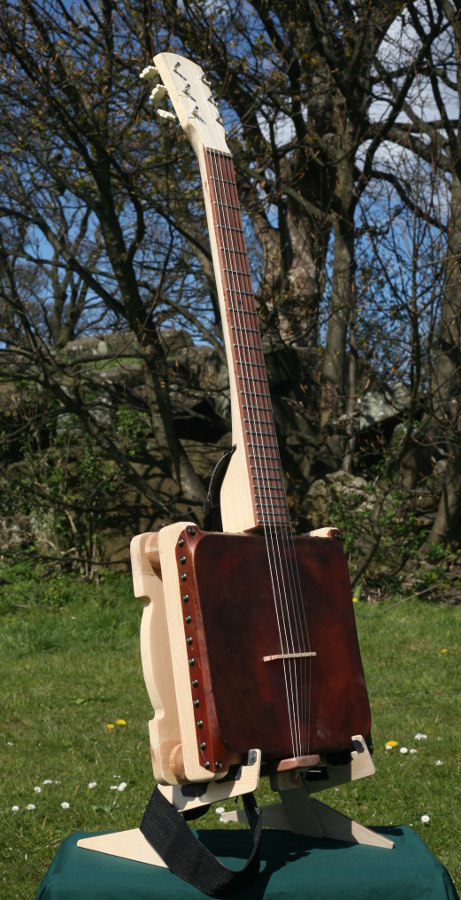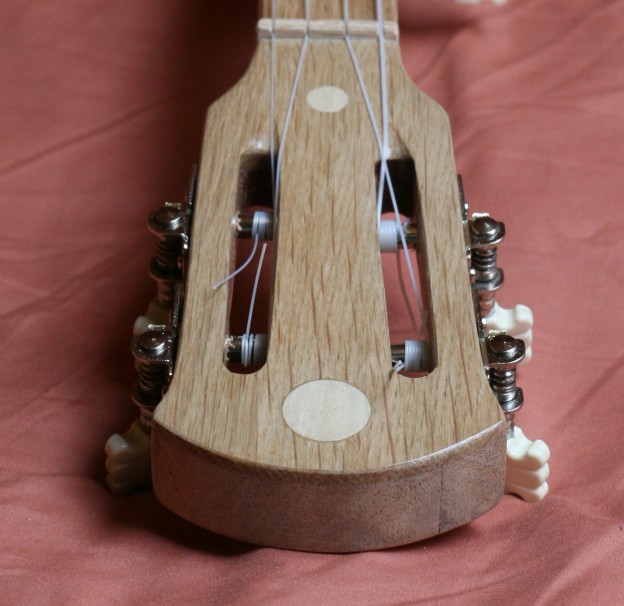A banjitar is a six string banjo, tuned like a guitar. If you can play a guitar, you can play banjitar. Taylor Swift plays a banjitar (though not a square one).
Evie was one of my pupils at Royal High School. This instrument was her ‘course project’ for the Practical Craft Skills (PCS) course. She completed it at the end of April 2013 and it plays really well: see the embedded video recording below where Royal High School pupil Ross Cockburn puts it through its paces.
The project was prior verified for use on the PCS course in 2012 but unfortunately, as thing stand, SQA will not allow it to be used for the the new Practical Woodworking course: a very odd decision and an opportunity missed. Teenagers are passionate about their music and many would opt to build a guitar (or at least a banjo that plays like a guitar) – rather than the three projects currently available – given the opportunity.
The square rim / pot was evolved to satisfy Practical Craft Skills course requirements to incorporate housing joints in the model.
High resolution photos of Evie’s banjitar are available at Royal High’s Flickr site:

